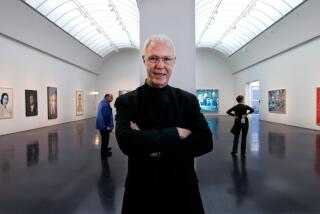THE ‘80s A Special Report :...
“The revival of Conceptual Art in the last five years can be traced to some extent to CalArts graduates who moved to New York,” said journalist Richard B. Woodward in a recent article in the New York Times. “CalArts students have swarmed over both coasts like a pack of elite professional soldiers.”
Like the Bauhaus in the ‘30s, Los Angeles’ California Institute of the Arts revolutionized art school in the ‘80s. A small private academy located in the Valencia area, CalArts took higher learning out of the ivory tower and into the marketplace. A theoretically rigorous school that emphasized idea over craft, CalArts trained students to talk about their art with sophistication (how to deliver a sales pitch in other words), and considers it a central responsibility to enlighten young artists to the harsher realities of the art business.
Drilling their students to be media savvy, CalArts has been faulted for producing artists whose sense of careerism takes precedence over all else, but you can’t argue with results. Prominently featured in all the Whitney Biennals of the ‘80s, CalArts graduates also dominated MOCA’s recent “Forest of Signs” exhibition--11 of the 30 artists in the show graduated from the school. Among CalArts thriving alumni are Matt Mullican, Mike Kelley, Barbara Bloom, Ross Bleckner, Troy Brauntuch, Eric Fishl, David Salle and Ashley Bickerton.
Artist John Baldessari is widely credited with shaping the school’s aesthetic (he recently left his post there), but he had help. Michael Asher and Douglas Huebler are major campus gurus, and the roster of artists who’ve taught there is a who’s who of contemporary culture. Jonathan Borofsky, Ravi Shankar, Laurie Anderson, Susan Rothenberg, Bruce Nauman, Nam June Paik, Elizabeth Murray, Sherrie Levine, Roberto Rossellini, Judy Pfaff and Barbara Kruger all did stints there.
CalArts’ days as the the country’s leading art think tank may be numbered, however. The CalArts aesthetic currently dominates the art world, so a stylistic insurrection is bound to be brewing someplace else.
And, as art critic Jeremy Gilbert-Rolfe observes (having taught at the school for several years), “CalArts was once an alternative, but it’s now become the academy.”
More to Read
The biggest entertainment stories
Get our big stories about Hollywood, film, television, music, arts, culture and more right in your inbox as soon as they publish.
You may occasionally receive promotional content from the Los Angeles Times.










